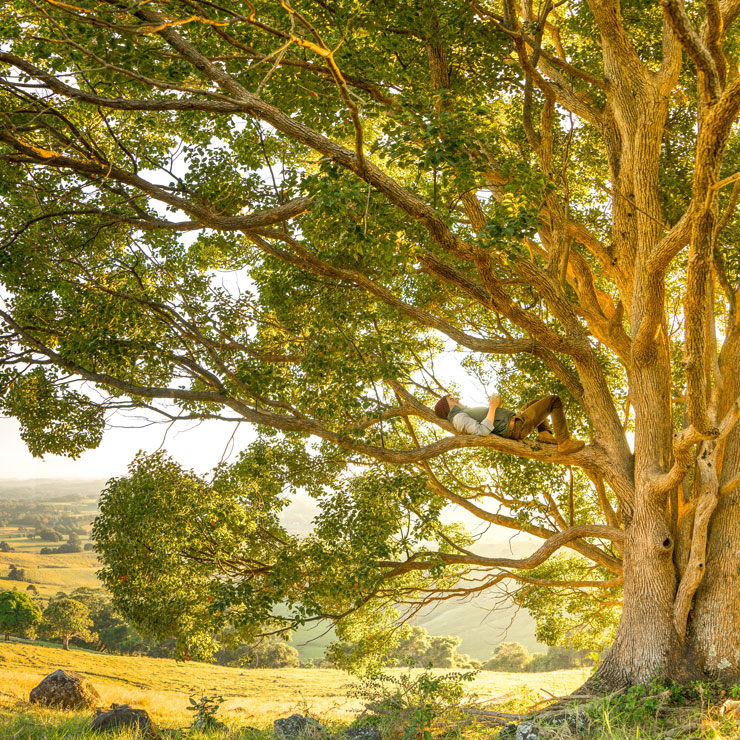
A Book Review of The Hidden Life of Trees: What They Feel, How they Communicate – Discoveries from A Secret World by Peter Wohlleben
As we come to terms with human caused climate change and our ecological impact, we are re-awakening to an understanding of ourselves as part of nature’s unfolding processes. As we think about what lies ahead for future generations, it can be daunting to begin to unravel the converging challenges we face.
While looking to the current state of affairs in our politics or the economy can lead one down a disheartening path, The Hidden Life of Trees offers a bit of respite through an enlightening reflection on just how much we humans have to learn from forests.
Wohlleben reveals, through more recent understanding of forest ecology, the social lives of trees demonstrating the resourcefulness, resilience and responsibility dynamics that play out in the forest each and every day. Through mycelial networks, mycorrhizal fungi and pheromones trees are communicating and managing the threats, challenges and opportunities in their environment. Even more, through this “wood wide web” and in various other ways, they are supporting the community of trees around them including younger and older trees and trees outside their own species, because there seems to be a recognition that the betterment of weaker trees benefits the community as a whole.
As we know with human communities, there are healthy human learning ecologies and unhealthy human learning ecologies. Wohlleben compares how different forest ecologies including parks and monoculture plantations affect the social ecology of the forest.
In a TedXCalgary talk I gave a few years ago, I had the opportunity to explore this analogy. In pulling together resources for this talk, I spent hours looking at pictures of forests on the internet. What I found remarkable was how difficult it was to find a picture of an ‘old growth, mixed-species forest’. In the majority of pictures, you would always see the human influence where forests were either parks or plantations designed for easy management or maximum profit.
The Hidden Life of Trees pushed my thinking much further than where I was at at the time of the TedXCalgary presentation. While I have always had an appreciation for preserving forest and learning from nature, what I found inspiring in Wohlleben’s writing was a deep appreciation for the forest’s “process of becoming”.
“…it is okay to use wood as long as trees are allowed to live in a way that is appropriate to their species. And that means that they should be allowed to fulfill their social needs, to grow in a true forest environment on undisturbed ground, and to pass their knowledge on to the next generation. And at least some of them should be allowed to grow old with dignity and finally die a natural death.” Peter Wohlleben, The Hidden Life of Trees
For the Human Learning Ecologist, this book is a reminder that the tree cannot be understood without understanding the forest and that we can’t understand ourselves without understanding ourselves as the human species. But what’s more, we likely can’t truly understand ourselves without understanding the forest, the parklands, the grasslands, the oceans and all of the other great ecosystems either.
Other exploration trail heads on this topic:
The Invention of Nature: Alexander Van Humboldt’s New World by Andrea Wulf
I read this book at the same time as reading The Hidden Life of Trees. In the 1800’s Humboldt was embracing an interconnected, ecological view of the world at a time when other scientists where embracing a narrow, reductionist, mechanical view of nature. Humboldt was one of the first people to record the destructive impact of humans on nature and the climate.
Radiolab Podcast Episode “From Tree to Shinning Tree”
As only Radiolab can do, this episode brings to life the “Wood Wide Web” and the work of Dr. Suzanne Simard, Professor of Forest Ecology at the University of British Columbia. A beautiful and fun story of how Dr. Simard and her team came to discover the mutually beneficial relationships between different trees and fungi in the soil. We still have so much to learn about soil!
Human Origins and Park Design
I was once told by a permaculturalist that the reason we design parks the way we do may have something to do with an evolutionary appreciation deep within our genes for savannahs since our species originated on the savannahs of Africa. These environments have sparsely spaced trees with grasslands separating them and his suggestion was that we’ve been trying to create savannah-like environments in parks, farms and landscapes as we have migrated around the globe.
Be Among the Trees
Go to the forest, be inspired, reflect and rejuvenate!
